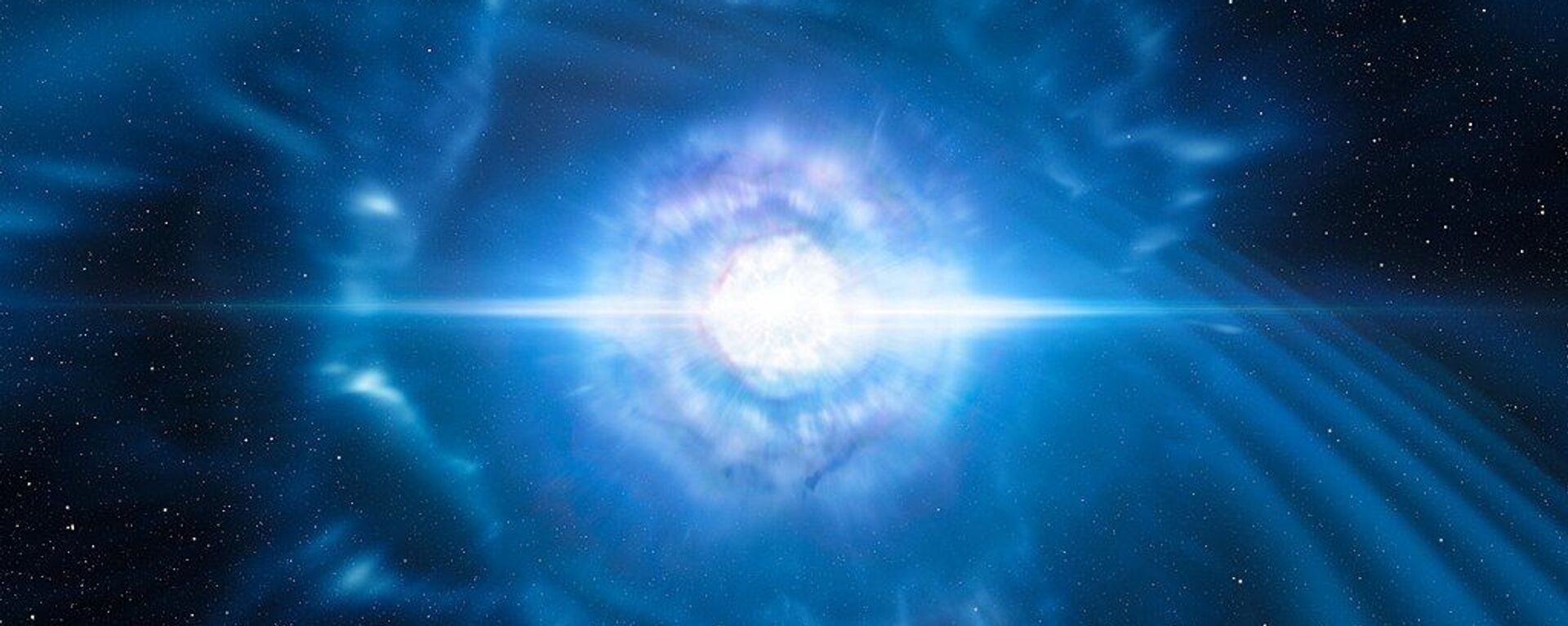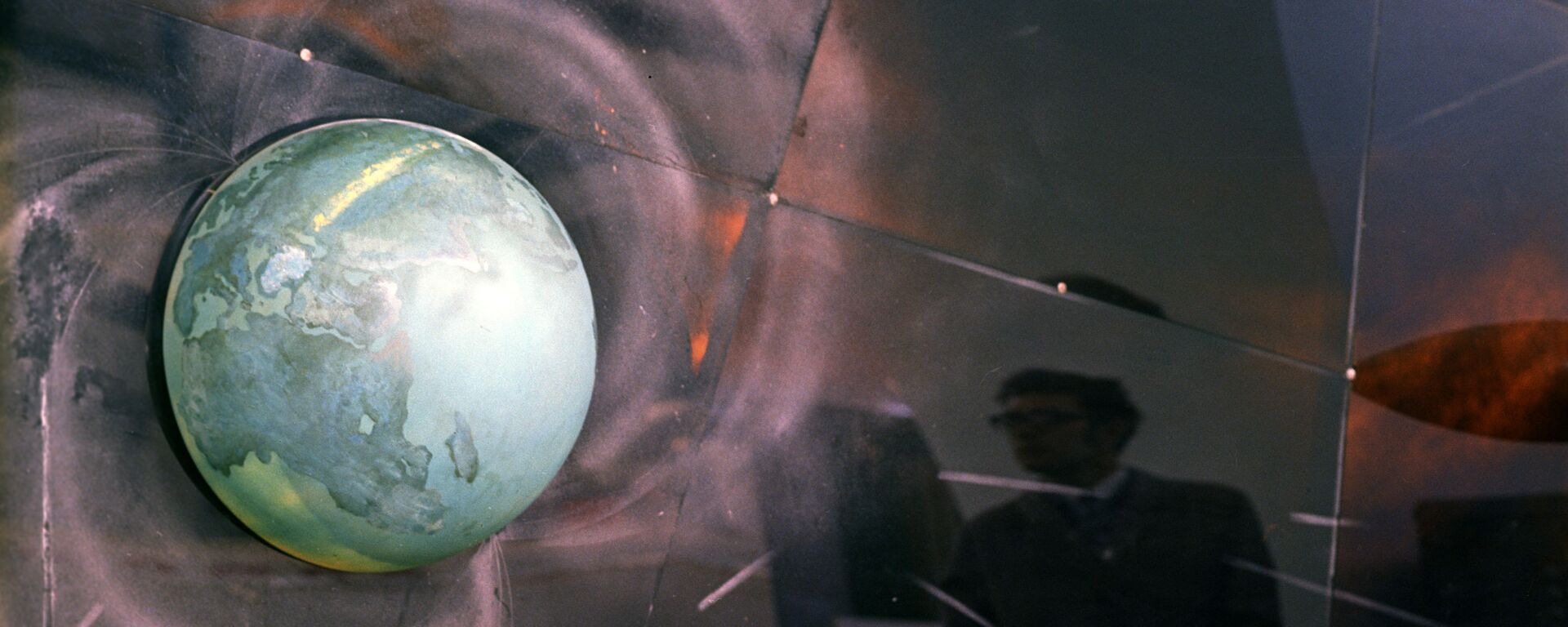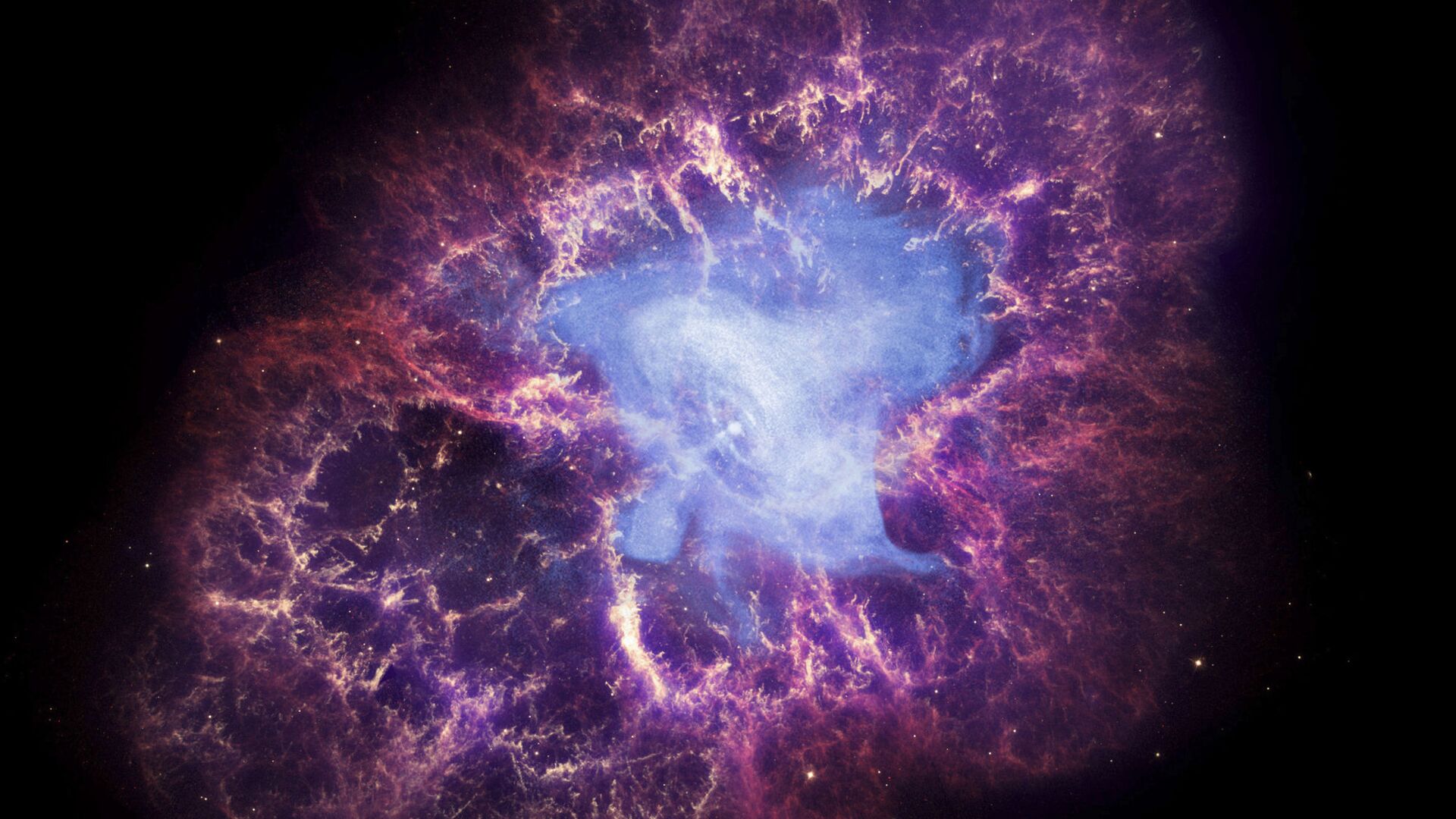https://sputnikglobe.com/20220103/distant-cosmic-monster-star-discovered-spitting-energy-of-a-billion-suns-1091995081.html
Distant ‘Cosmic Monster' Star Discovered Spitting Energy of a Billion Suns
Distant ‘Cosmic Monster' Star Discovered Spitting Energy of a Billion Suns
Sputnik International
A distant magnetic star erupted, spitting out as much energy as our sun produces in 100,000 years, in just 1/10 of a second, according to study by Spanish scientists.
2022-01-03T12:46+0000
2022-01-03T12:46+0000
2022-01-03T12:46+0000
neutron star
https://cdn1.img.sputnikglobe.com/img/07e4/08/11/1080190824_0:448:2048:1600_1920x0_80_0_0_f1fd9c0f35dec7a1f7497161e413e7b3.jpg
A dense, distant magnetic star violently erupted, spitting out as much energy as our sun produces in 100,000 years, in just 1/10 of a second, according to observations an international team of researchers reported on 22 December in the journal Nature.The researchers had managed to catch one of these unpredictable flares and calculate oscillations in the brightness of the erupting magnetar, according to their statement translated from Spanish.The flare was detected on 15 April 2020 by the Atmosphere–Space Interactions Monitor (ASIM) instrument on the International Space Station. Its artificial intelligence (AI) zoomed in on the burst, offering the team an opportunity to analyse that brief energy surge.It took the study authors over a year to analyse ASIM's two seconds of data. They did so by dividing the flare into four phases based on the magnetar's energy output. They were then able to measure variations in the star's magnetic field caused by the energy pulse.Most Magnetic Stars in the UniverseThe magnetar is a neutron star whose defining feature is that it has an ultra-powerful magnetic field - about 1,000 times stronger than the Earth’s. A neutron star forms when a massive star dies in what is called a supernova - a massive explosion. Protons and electrons in its core are crushed into a compressed solar mass.Vast amounts of energy are released by magnetars in the form of flares, X-rays, and gamma-ray bursts. Astrophysicists do not yet know exactly how a magnetar generates its magnetic field and as for the brief eruptions – they present a challenge to study.Magnetars possess magnetic fields more powerful than any other magnetic object in the universe."Even in an inactive state, magnetars can be 100,000 times more luminous than our sun," said study lead author Alberto J. Castro-Tirado.The magnetar whose eruption the team observed is located in the Sculptor Galaxy, about 13 million light-years from Earth.Study co-author Victor Reglero, director of UV's Image Processing Laboratory, described it as a "true cosmic monster."The flare in the study is the most distant magnetar burst detected to date. With scientists speculating that such eruptions may be caused by so-called “starquakes”, the fresh study may help researchers probe further the enigmatic factors triggering the magnetars' energy bursts.
https://sputnikglobe.com/20210824/scientists-come-up-with-new-model-of-neutron-stars-to-help-clarify-einsteins-general-theory--1083699745.html
https://sputnikglobe.com/20210203/astronomers-detect-puzzling-activity-from-super-powerful-radio-loud-magnetar-1081970626.html
Sputnik International
feedback@sputniknews.com
+74956456601
MIA „Rosiya Segodnya“
2022
News
en_EN
Sputnik International
feedback@sputniknews.com
+74956456601
MIA „Rosiya Segodnya“
Sputnik International
feedback@sputniknews.com
+74956456601
MIA „Rosiya Segodnya“
neutron star magnetar energy
neutron star magnetar energy
Distant ‘Cosmic Monster' Star Discovered Spitting Energy of a Billion Suns
A magnetic star, or magnetar, is a neutron star boasting an exceptionally powerful magnetic field. While magnetars are known to often flare brilliantly, these brief eruptions present a challenge for astrophysicists hoping to study them.
A dense, distant magnetic star violently erupted, spitting out as much energy as our sun produces in 100,000 years, in just 1/10 of a second, according to observations an international team of researchers
reported on 22 December in the journal Nature.
The researchers had managed to catch one of these unpredictable flares and calculate oscillations in the brightness of the erupting magnetar, according to their
statement translated from Spanish.
The flare was detected on 15 April 2020 by the Atmosphere–Space Interactions Monitor (ASIM) instrument on the International Space Station. Its artificial intelligence (AI) zoomed in on the burst, offering the team an opportunity to analyse that brief energy surge.
It took the study authors over a year to analyse ASIM's two seconds of data. They did so by dividing the flare into four phases based on the magnetar's energy output. They were then able to measure variations in the star's magnetic field caused by the energy pulse.
Most Magnetic Stars in the Universe
The magnetar is a neutron star whose defining feature is that it has an ultra-powerful magnetic field - about 1,000 times stronger than the Earth’s. A neutron star forms when a massive star dies in what is called a supernova - a massive explosion. Protons and electrons in its core are crushed into a compressed solar mass.

24 August 2021, 10:04 GMT
Vast amounts of energy are released by magnetars in the form of flares, X-rays, and gamma-ray bursts. Astrophysicists do not yet know exactly how a magnetar generates its magnetic field and as for the brief eruptions – they present a challenge to study.
Magnetars possess magnetic fields more powerful than any other magnetic object in the universe.
"Even in an inactive state, magnetars can be 100,000 times more luminous than our sun," said study lead author Alberto J. Castro-Tirado.
"But in the case of the flash that we have studied — GRB2001415 — the energy that was released is equivalent to that which our sun radiates in 100,000 years," added the research professor with the Institute for Astrophysics of Andalucía at the Spanish Research Council.
The magnetar whose eruption the team observed is located in the Sculptor Galaxy, about 13 million light-years from Earth.

3 February 2021, 17:05 GMT
Study co-author Victor Reglero, director of UV's Image Processing Laboratory, described it as a "true cosmic monster."
The flare in the study is the most distant magnetar burst detected to date. With scientists speculating that such eruptions may be caused by so-called “starquakes”, the fresh study may help researchers probe further the enigmatic factors triggering the
magnetars' energy bursts.





